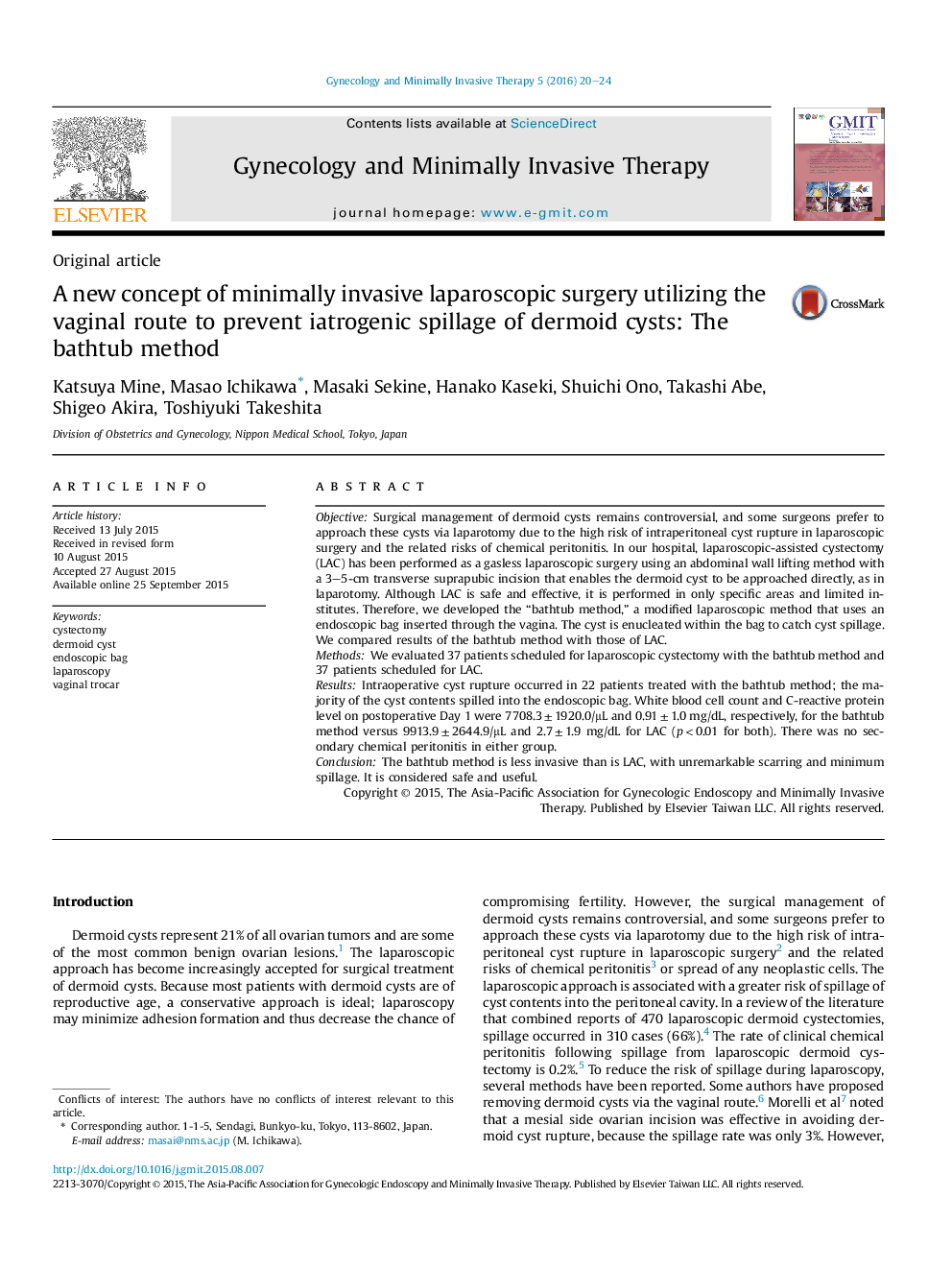| Article ID | Journal | Published Year | Pages | File Type |
|---|---|---|---|---|
| 3951931 | Gynecology and Minimally Invasive Therapy | 2016 | 5 Pages |
ObjectiveSurgical management of dermoid cysts remains controversial, and some surgeons prefer to approach these cysts via laparotomy due to the high risk of intraperitoneal cyst rupture in laparoscopic surgery and the related risks of chemical peritonitis. In our hospital, laparoscopic-assisted cystectomy (LAC) has been performed as a gasless laparoscopic surgery using an abdominal wall lifting method with a 3–5-cm transverse suprapubic incision that enables the dermoid cyst to be approached directly, as in laparotomy. Although LAC is safe and effective, it is performed in only specific areas and limited institutes. Therefore, we developed the “bathtub method,” a modified laparoscopic method that uses an endoscopic bag inserted through the vagina. The cyst is enucleated within the bag to catch cyst spillage. We compared results of the bathtub method with those of LAC.MethodsWe evaluated 37 patients scheduled for laparoscopic cystectomy with the bathtub method and 37 patients scheduled for LAC.ResultsIntraoperative cyst rupture occurred in 22 patients treated with the bathtub method; the majority of the cyst contents spilled into the endoscopic bag. White blood cell count and C-reactive protein level on postoperative Day 1 were 7708.3 ± 1920.0/μL and 0.91 ± 1.0 mg/dL, respectively, for the bathtub method versus 9913.9 ± 2644.9/μL and 2.7 ± 1.9 mg/dL for LAC (p < 0.01 for both). There was no secondary chemical peritonitis in either group.ConclusionThe bathtub method is less invasive than is LAC, with unremarkable scarring and minimum spillage. It is considered safe and useful.
